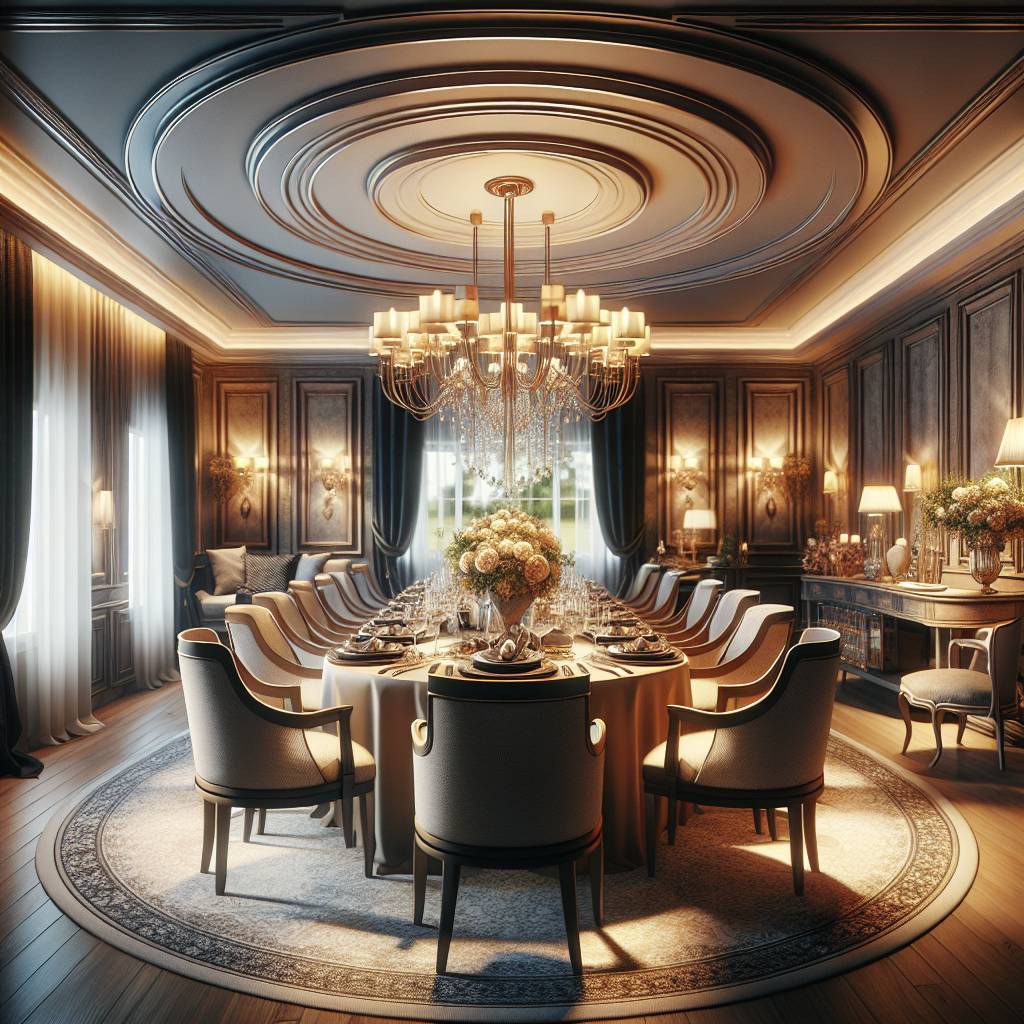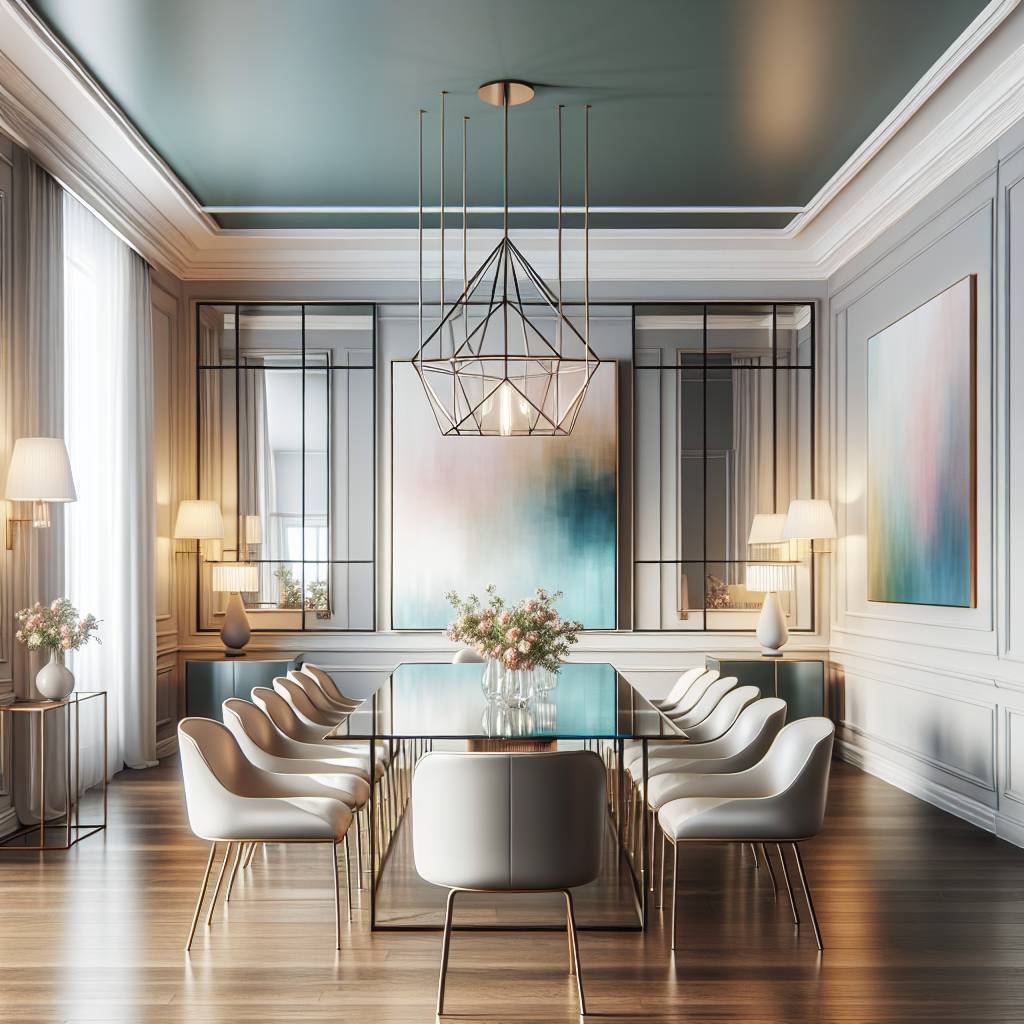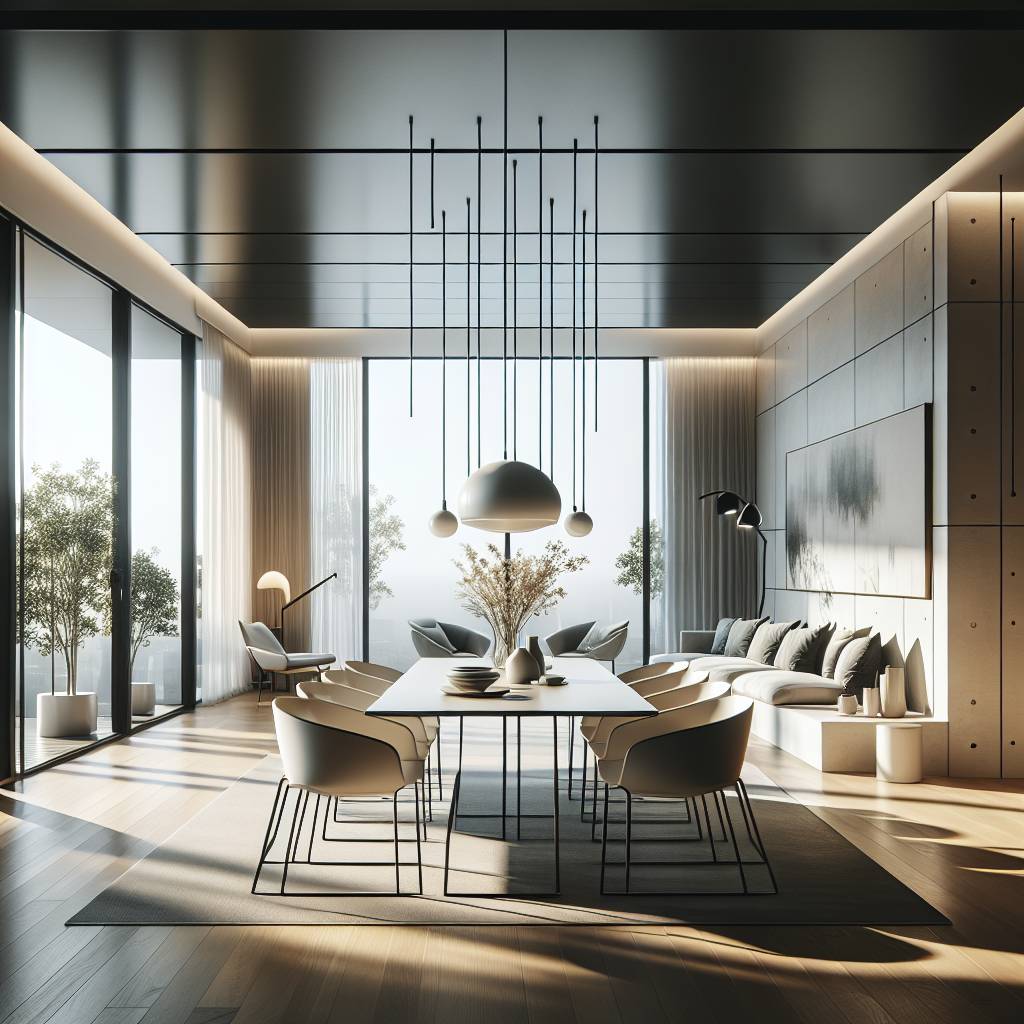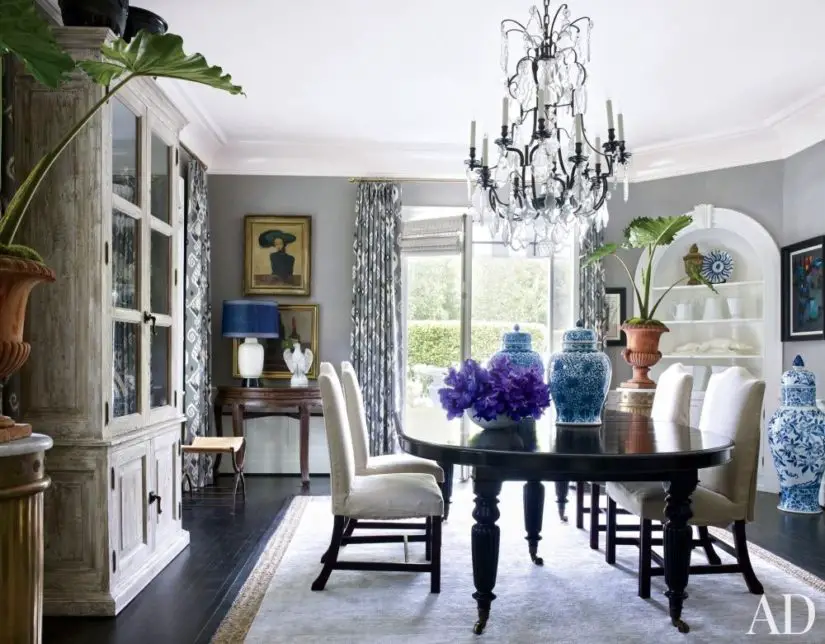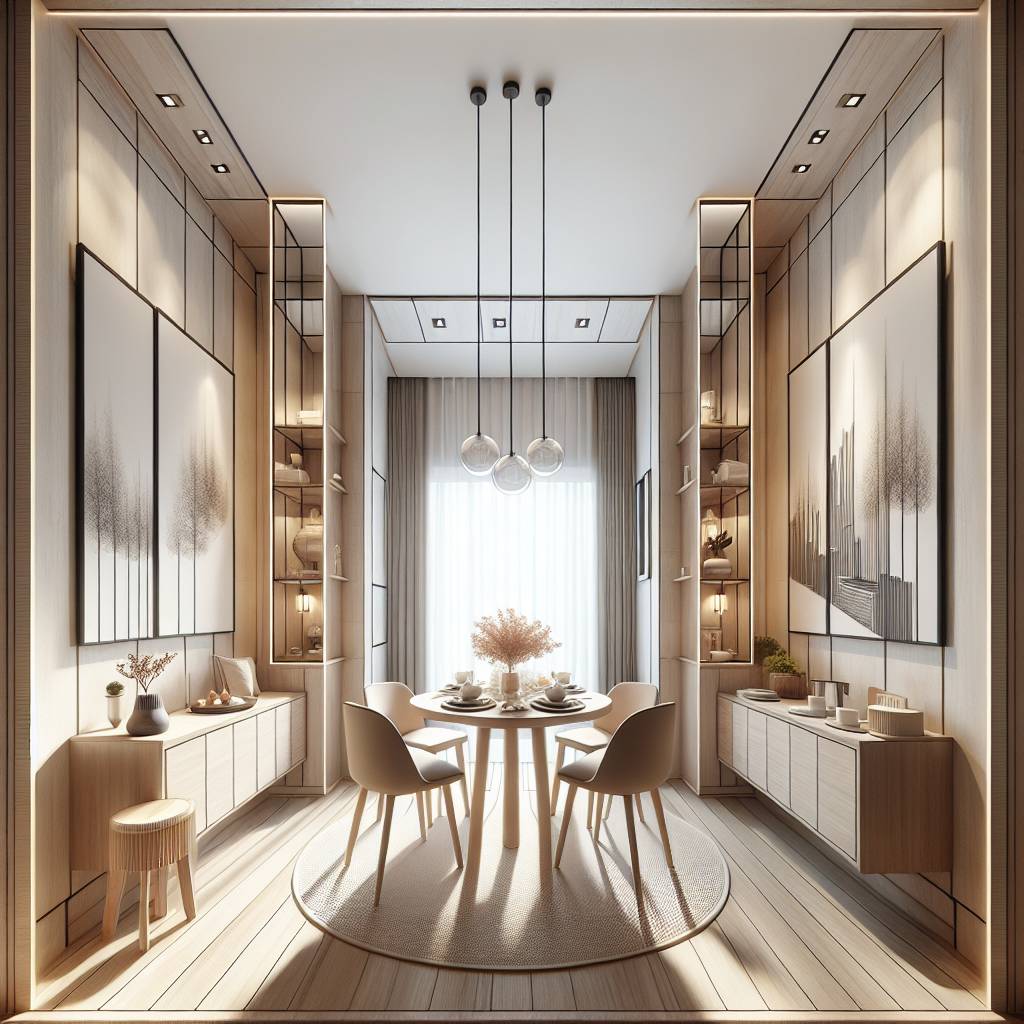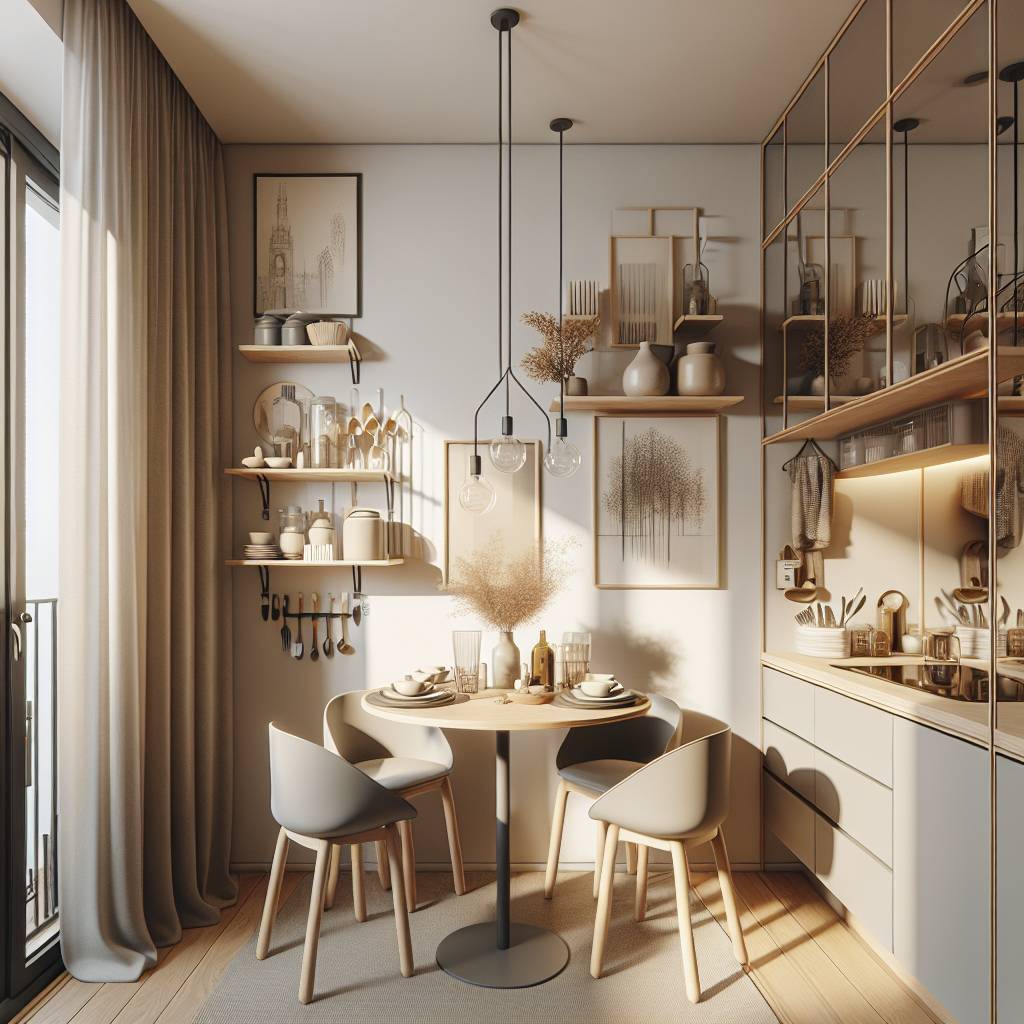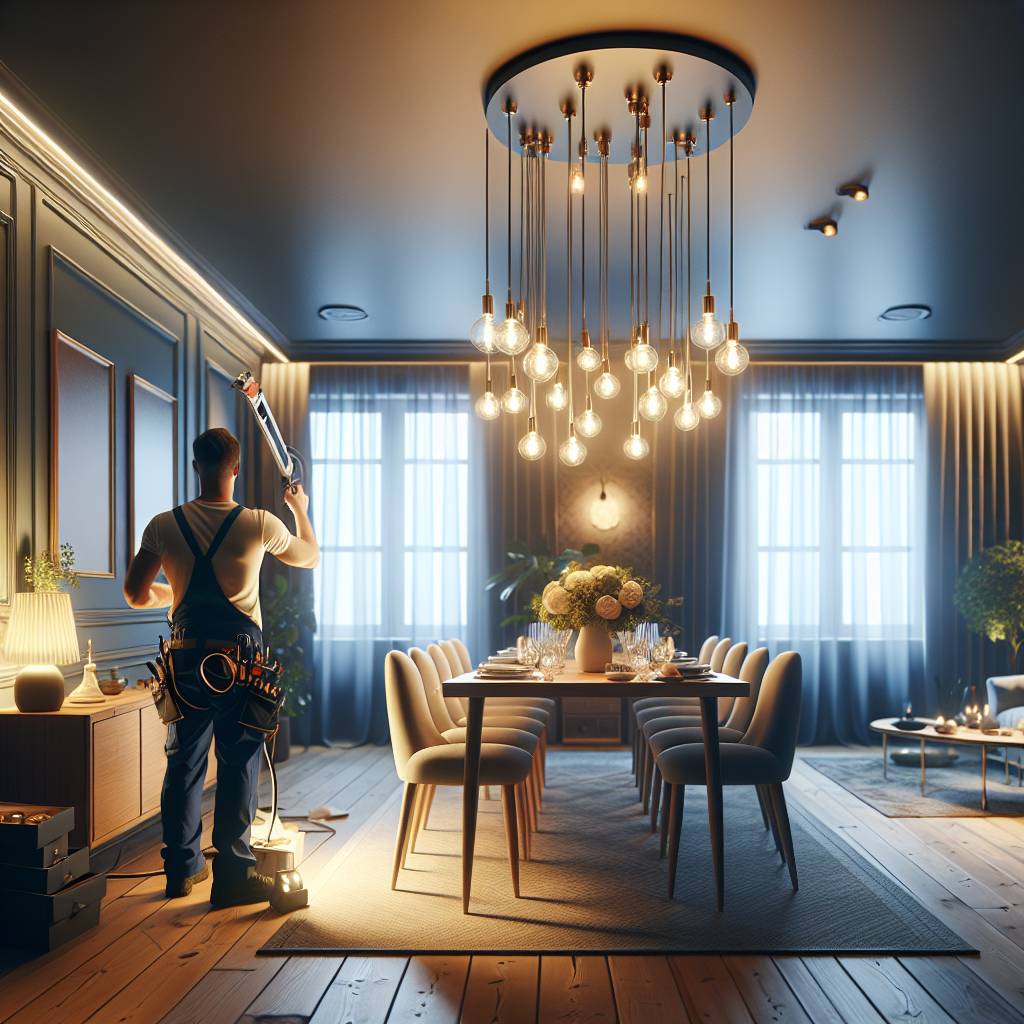Finding the perfect placement for ceiling lights in your dining room can be a game-changer. It’s not just about illuminating the space; it’s about creating an ambiance that enhances every mealtime experience. Whether you’re aiming for intimate dinners or lively gatherings, getting the lighting right is key. In this post, we’ll dive into expert tips and tricks to help you achieve the ideal balance of functionality and style.
Understanding how lighting has evolved in dining spaces over time can provide valuable insights. From traditional chandeliers to modern pendant lights, each era has brought its own unique approach to illuminating dining rooms. By considering these historical influences alongside contemporary trends, you can craft a timeless yet on-trend lighting scheme that elevates your dining area.
Key Takeaways
- Proper lighting can significantly enhance the ambiance and functionality of a dining room, making it essential to prioritize thoughtful ceiling light placement.
- Consider the size and layout of the dining area when determining the placement of ceiling lights to ensure even illumination and a visually appealing effect.
- Selecting the right light fixture, such as a chandelier or pendant lights, can contribute to creating a welcoming and stylish dining space, enhancing the overall dining experience.
- Address common lighting issues like glare, shadows, and inadequate brightness by strategically placing ceiling lights and utilizing ambient lighting to create a balanced and inviting atmosphere.
- Incorporating pendant lights and chandeliers can serve as focal points in the dining room, adding visual interest and personality to the space while providing functional illumination.
- Stay updated with lighting trends to explore innovative options that can elevate the dining room’s aesthetic appeal and contribute to a modern, inviting atmosphere.
Importance of Proper Lighting
Ambiance Creation
Creating the right ambiance in a dining room is crucial for setting the mood and enhancing the overall dining experience. Dimmer switches are an excellent choice as they allow you to adjust the lighting levels according to different occasions, such as intimate dinners or lively gatherings. By using dimmer switches, you can effortlessly transition from bright task lighting during meal preparation to softer, more subdued illumination during dinner.
When choosing bulbs for your ceiling lights, consider their color temperature. Warmer color temperatures (around 2700-3000K) create a cozy and inviting atmosphere, perfect for dining rooms. On the other hand, cooler color temperatures (3500-4100K) provide a brighter and more energetic feel suitable for entertaining guests or hosting events.
Another way to enhance ambiance is by incorporating pendant lights above the dining table. These fixtures not only provide focused task lighting but also contribute to creating an intimate and cozy atmosphere ideal for enjoying meals with family and friends.
Balance and Scale
Achieving visual balance in your dining room through proper ceiling light placement is essential. It’s important that the size of your light fixture is proportionate to the dimensions of your dining table. For example, if you have a long rectangular table, opt for linear fixtures that complement its shape. Conversely, round or square fixtures work best with circular tables.
Positioning multiple fixtures evenly over a long table helps distribute light uniformly across the entire surface area while adding symmetry and visual appeal to space.Consider installing a chandelier that complements the scale of the room without overwhelming it.
Table Shape Consideration
The shape of your dining table plays a pivotal role in determining where and what type of ceiling light fixture should be placed above it. Linear fixtures are well-suited for rectangular tables as they help elongate space while providing ample illumination along its length.
For circular tables, round or square-shaped pendant lights work harmoniously with their form while delivering balanced ambient lighting throughout the area underneath them.
Ceiling Light Placement Basics
Fixture Positioning
The position of the fixtures is crucial. For a harmonious look, center the light fixture over the dining table. If you have an elongated table, consider positioning multiple fixtures in a row to evenly illuminate the entire surface. Adjusting the height of each fixture is essential to prevent obstruction of views and ensure balanced lighting throughout the room.
For example:
- A long rectangular table may require two or more pendant lights positioned equidistant from each other.
- When hanging pendant lights, make sure they are high enough not to obstruct anyone’s view across the table but low enough to create an intimate ambiance.
Height Considerations
Ceiling light placement also involves considering proper heights for hanging fixtures above the dining table. Ideally, hang fixtures approximately 30 to 36 inches above the surface of the table. This ensures that there is ample illumination without overpowering or creating harsh shadows on diners’ faces.
Moreover:
- Taller individuals may require higher-hanging fixtures for comfortable head clearance.
- Adjusting pendant heights can help prevent glare while enhancing visual aesthetics by creating a balanced look within your dining space.
Room Proportions
The size and proportions of your dining area play a significant role in determining suitable ceiling light placements. In spacious dining areas with high ceilings, selecting larger fixtures can complement and enhance these grand spaces effectively. Conversely, compact dining spaces benefit from smaller-sized fixtures that provide adequate illumination without overwhelming or crowding visually.
Consider this:
- In rooms with tall ceilings, chandeliers or statement pendants can accentuate vertical space beautifully.
- Lower-ceilinged rooms might be better suited for flush mount or semi-flush mount options that don’t encroach upon overhead space excessively.
Choosing the Right Light Fixture
Size Selection
The size of the fixture plays a crucial role. In grand dining areas with high ceilings, opt for a larger fixture that can fill the space and create a striking focal point. On the other hand, in more intimate dining spaces, consider choosing a smaller fixture to maintain proportionality and prevent overwhelming the room. It’s essential to ensure that the chosen fixture’s size complements the dimensions of the room.
For example, if you have an expansive dining area with soaring ceilings, an oversized chandelier or pendant light can add drama and elegance. However, for a cozy breakfast nook or compact dining space within an open floor plan, a petite yet stylish light fixture would be more suitable.
When selecting ceiling lights for your dining area, keep in mind that too large of a fixture might overpower smaller rooms while too small of one may get lost in larger spaces.
Shape Relevance
The shape of your ceiling light should harmonize with not only your table but also with the overall design scheme of your dining room. For long and narrow tables such as those found in rectangular-shaped rooms or banquet-style seating arrangements, linear fixtures like linear suspension lights are ideal as they provide even illumination along their length without overwhelming visually.
Conversely, round or square fixtures work well above symmetrical tables placed at center points within square or circular rooms since these shapes complement each other aesthetically. Considering how different shapes interact is important; for instance: pairing a round table with a round pendant creates visual cohesion.
It’s worth noting that when choosing ceiling lights based on shape relevance alone isn’t enough; you must also take into account factors such as style preference and existing decor elements to achieve desired aesthetics.
Enhancing Dining Experience with Light
Warm Glow Bulbs
Using warm-colored bulbs is crucial. These bulbs create a welcoming ambiance, perfect for entertaining guests in the dining area. Consider LED bulbs with adjustable color temperatures for versatility. Opt for dimmable bulbs to have control over both warmth and brightness.
Using warm-colored bulbs can significantly enhance the atmosphere of your dining room. Imagine having a cozy dinner gathering under soft, inviting lighting that makes everyone feel comfortable and relaxed. LED bulbs with adjustable color temperatures offer flexibility, allowing you to tailor the lighting to suit different occasions or moods in your dining space.
Dimmable bulbs are an excellent choice because they give you full control over the level of warmth and brightness in your dining room. Whether it’s an intimate dinner for two or a lively gathering of friends, being able to adjust the lighting can make all the difference in creating the right ambiance.
Dimmer Utilization
Installing dimmer switches is another essential aspect of ceiling light placement tips for dining rooms. This addition provides versatile lighting options, enabling you to set just the right mood for any occasion in your dining area. With dimmer controls, you can easily adjust lighting levels based on different dining scenarios.
The utilization of dimmers offers practical benefits beyond just setting a pleasant ambiance during meals with guests. It also contributes to energy efficiency by allowing you to lower light levels when full illumination isn’t necessary. By adjusting the lights according to specific needs, such as during mealtime or after-dinner conversations, you’ll be able to create an inviting environment while saving on energy costs.
Addressing Common Lighting Issues
Glare Reduction
Positioning ceiling light fixtures in a dining room to minimize glare on reflective surfaces is crucial for creating a comfortable and inviting ambiance. Placing lights strategically can help prevent harsh glares that may cause discomfort or hinder visibility during meals. For instance, if there’s a glossy dining table, it’s essential to adjust the placement of the light fixture so that it doesn’t create distracting reflections. Using frosted or diffused bulbs can significantly reduce the intensity of glare from direct light sources, making the overall lighting softer and more pleasant.
Adjusting pendant heights is another effective way to address glare issues in dining rooms. By ensuring that the pendant lights are positioned at an appropriate height, you can prevent direct eye contact with the bulbs while still maintaining optimal illumination for the dining area. This not only minimizes glare but also contributes to a more visually appealing setting for enjoying meals with family and friends.
Light Distribution
Ensuring even distribution of light across the entire dining area is essential for creating an inviting atmosphere and facilitating various activities such as dining, reading, or socializing. Positioning multiple fixtures strategically throughout the space helps eliminate dark spots and ensures that every corner receives adequate illumination. For example, instead of relying solely on a single central chandelier, incorporating additional wall sconces or recessed lights can contribute to more uniform lighting distribution.
Moreover, utilizing reflective surfaces within the dining room can play a significant role in enhancing light dispersion. Placing mirrors strategically on walls or incorporating glass tabletops can help bounce light around the space effectively, reducing shadows and contributing to an overall brighter environment without increasing energy consumption.
Designing with Pendant Lights
Linear Arrangements
Linear arrangements play a crucial role. Installing linear fixtures parallel to the table’s longer sides ensures balanced illumination across the dining area. By aligning multiple linear pendants, you can create symmetry and an aesthetically pleasing visual effect. It’s essential to maintain uniform spacing between each pendant, ensuring that the lighting is evenly distributed throughout the space.
For instance, if your dining table is rectangular in shape, consider installing a set of linear pendants in a row along its length rather than width. This arrangement not only provides ample illumination but also complements the table’s dimensions.
Another important aspect of linear arrangements is achieving balance and harmony within the room. By carefully positioning and spacing these fixtures, you can ensure that every corner of your dining space receives adequate lighting without any dark spots or glare.
Rule of Three
Applying the rule of three when designing with pendant lights offers an effective way to achieve balanced and visually appealing lighting. Instead of opting for a single large chandelier, consider using three matching pendants above your dining table. This approach creates visual interest while maintaining an even distribution of light across the entire surface area.
In addition to using three matching pendants, another creative application of this principle involves incorporating three smaller fixtures instead of one large chandelier. This not only adds character and uniqueness to your dining space but also allows for more flexibility in adjusting individual lights based on specific lighting needs during different occasions such as intimate dinners or lively gatherings.
Chandelier as a Focal Point
Statement Pieces
Incorporating a striking chandelier as a focal point can elevate the entire room’s ambiance. Choosing a unique, eye-catching fixture not only provides adequate illumination but also serves as a conversation starter during gatherings. Opt for an elegant and distinctive lighting centerpiece that complements the overall interior design while adding character to the dining space.
For instance, imagine a grand crystal chandelier hanging above an ornate dining table adorned with fine china and fresh flowers. The sparkling lights refracting through the crystals create a mesmerizing effect, drawing attention and setting the perfect tone for an exquisite dining experience.
Low-Hanging Options
Consider implementing low-hanging pendants to create an intimate and cozy atmosphere in your dining area. These fixtures can effectively delineate the space while providing focused illumination over the table, enhancing both functionality and aesthetics. By strategically placing low-hanging lights, you can ensure that every corner of your dining area is well-lit without overwhelming the space.
For example, envision sleek metal pendant lights suspended at varying heights above each seat at the table. This arrangement not only adds visual interest but also allows for customizable lighting levels based on individual preferences or specific tasks such as reading menus or enjoying dessert after dinner.
Complementing with Ambient Lighting
Wall Lights
Wall sconces are a fantastic addition to complement ceiling lights in dining rooms. By strategically placing wall lights, you can create a warm and inviting atmosphere for your dining space. These fixtures not only provide additional illumination but also contribute to the overall aesthetic appeal of the room.
Supplementing your ceiling lights with well-placed wall sconces can help accentuate artwork or architectural features within the dining area. For instance, if there’s a beautiful painting or an interesting texture on one of the walls, using wall lights can draw attention to these focal points while adding depth and visual interest to the room.
Enhancing the overall lighting design in your dining room involves careful consideration of where to position wall-mounted fixtures. Placing them at suitable intervals along the walls ensures that light is evenly distributed across the space, minimizing harsh shadows and creating a cozy ambiance for meals and gatherings.
Table Lamps
Incorporating stylish table lamps on sideboards or buffets is another effective way to introduce ambient lighting into your dining area. Not only do table lamps serve as decorative elements, but they also offer task lighting for specific areas such as serving stations or display shelves within the room.
The choice of table lamps plays a crucial role in ensuring that they harmonize with the overall decor of your dining room. Opt for table lamp designs that seamlessly blend with your existing interior style, whether it’s modern, traditional, or eclectic. This helps create a cohesive look while providing soft mood lighting during dinners and other occasions.
Keeping Up with Lighting Trends
Design Innovations
Embracing modern lighting designs can elevate the overall ambiance. Geometric pendants and sculptural fixtures are trendy choices that add a contemporary touch to the dining area. These innovative materials and shapes bring a fresh, stylish look to the space, creating a visually appealing focal point.
Incorporating smart lighting technology is not only convenient but also enhances energy efficiency. For instance, dimmable LED fixtures allow for adjustable brightness levels, setting the mood for various occasions such as intimate dinners or lively gatherings. This innovation in lighting design aligns with the need for both functionality and aesthetics in modern dining spaces.
Trendy Placement Ideas
Experimenting with asymmetrical placement of multiple pendants can create an intriguing visual effect in the dining room. By varying the heights and distances between each pendant, you can achieve a dynamic arrangement that adds depth and dimension to the space. This approach allows for personalization while contributing to an inviting atmosphere.
Exploring off-center positioning is another way to infuse a modern look into your dining room’s lighting setup. Placing a single statement fixture slightly away from its conventional center position adds an element of surprise and uniqueness. It breaks away from traditional symmetry, offering an eclectic appeal that complements contemporary interior design trends.
Embracing unconventional placement ideas presents an opportunity to showcase creativity and style within your dining area. For example, installing pendant lights in unexpected locations like above built-in shelving or near architectural features can draw attention to these elements while illuminating the surrounding space effectively.
Summary
You’ve now got the lowdown on nailing the perfect lighting setup for your dining room. From understanding the significance of proper lighting to mastering the placement of ceiling lights, you’re all set to elevate your dining experience. Choosing the right fixture and addressing common lighting issues will ensure that your space is both functional and stylish. Don’t forget to explore pendant lights and chandeliers as focal points, while complementing with ambient lighting to create that wow factor. And hey, keeping up with lighting trends will keep your space looking fresh and inviting.
Now it’s your turn to shine! Put these tips into action and watch how they transform your dining area into a captivating, welcoming space. Happy decorating!
Frequently Asked Questions
How does proper lighting impact the dining experience?
Proper lighting can enhance the ambiance and mood of a dining room, creating a welcoming and comfortable atmosphere. It also highlights the decor and architectural features, making the space more inviting for meals and gatherings.
What are some common issues with dining room lighting?
Common issues include inadequate light levels, glare or shadows from improperly placed fixtures, and mismatched styles that detract from the overall design. Addressing these concerns can significantly improve the functionality and aesthetics of the space.
What is ambient lighting, and how does it complement ceiling lights in a dining room?
Ambient lighting provides overall illumination to create a warm glow throughout the room. When combined with strategically placed ceiling lights, it helps to fill in any shadows while adding depth to the space. This combination creates a balanced and inviting environment for dining.
Why is chandelier placement important in a dining room setting?
A chandelier serves as both a functional light source and an eye-catching focal point in a dining area. Proper placement ensures that it illuminates the table effectively while also adding visual interest to the entire room, enhancing its aesthetic appeal during meals or gatherings.
How do pendant lights contribute to effective dining room lighting design?
Pendant lights offer versatility in terms of style, size, and placement options. They can be used to define specific areas within the dining space while adding character and charm. By carefully selecting pendant lights that complement your decor theme, you can elevate your overall design scheme.
